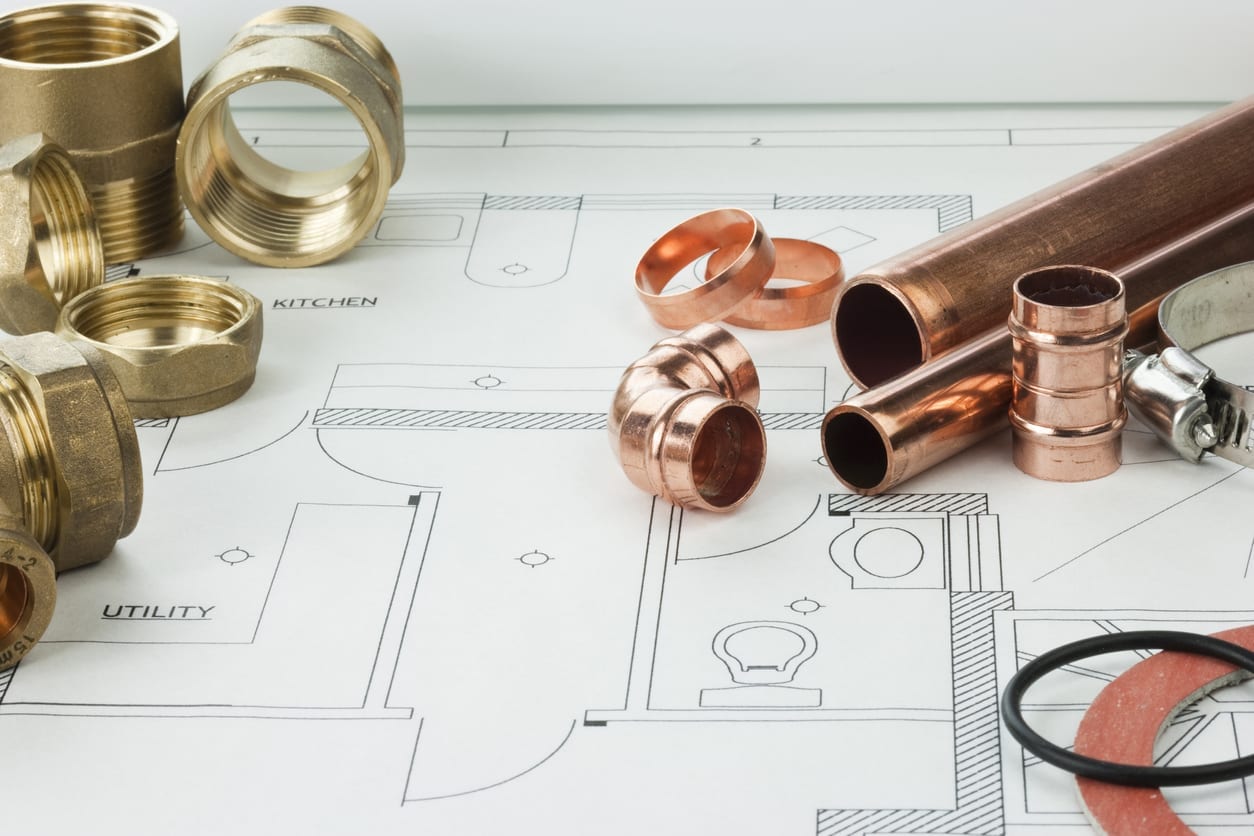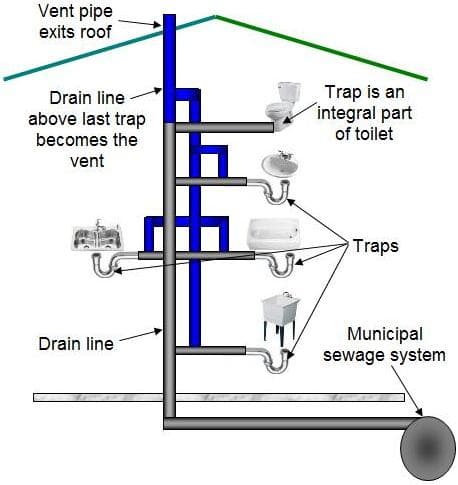Everything You Need to Know to Your Property's Plumbing System Anatomy
Request A QuoteJust how do you really feel with regards to The Inner Workings of Your Home's Plumbing?

Recognizing how your home's pipes system functions is vital for each home owner. From supplying clean water for drinking, food preparation, and showering to safely eliminating wastewater, a properly maintained pipes system is essential for your household's health and comfort. In this thorough guide, we'll discover the detailed network that comprises your home's pipes and offer ideas on maintenance, upgrades, and managing common issues.
Introduction
Your home's pipes system is more than simply a network of pipes; it's a complicated system that guarantees you have access to tidy water and effective wastewater removal. Understanding its elements and just how they collaborate can aid you prevent costly repair services and ensure whatever runs efficiently.
Basic Parts of a Plumbing System
Pipes and Tubing
At the heart of your plumbing system are the pipelines and tubes that bring water throughout your home. These can be constructed from various products such as copper, PVC, or PEX, each with its benefits in regards to longevity and cost-effectiveness.
Fixtures: Sinks, Toilets, Showers, etc.
Fixtures like sinks, bathrooms, showers, and tubs are where water is used in your house. Understanding how these components link to the pipes system helps in diagnosing problems and planning upgrades.
Valves and Shut-off Points
Valves control the circulation of water in your plumbing system. Shut-off valves are crucial during emergencies or when you need to make repair work, allowing you to isolate parts of the system without disrupting water circulation to the whole residence.
Supply Of Water System
Main Water Line
The primary water line links your home to the metropolitan water or an exclusive well. It's where water enters your home and is dispersed to numerous components.
Water Meter and Stress Regulatory Authority
The water meter measures your water usage, while a pressure regulator guarantees that water flows at a risk-free pressure throughout your home's plumbing system, avoiding damage to pipes and fixtures.
Cold Water vs. Hot Water Lines
Comprehending the distinction between cold water lines, which provide water straight from the main, and hot water lines, which lug warmed water from the water heater, helps in repairing and preparing for upgrades.
Drainage System
Drain Piping and Traps
Drain pipes lug wastewater far from sinks, showers, and bathrooms to the sewer or septic system. Traps protect against sewer gases from entering your home and also catch debris that can trigger clogs.
Air flow Pipes
Air flow pipelines allow air right into the drain system, preventing suction that can slow down water drainage and trigger traps to empty. Correct air flow is necessary for preserving the stability of your plumbing system.
Relevance of Correct Drain
Guaranteeing proper water drainage stops backups and water damage. Regularly cleaning up drains and maintaining catches can avoid costly fixings and prolong the life of your plumbing system.
Water Heating System
Sorts Of Water Heaters
Water heaters can be tankless or typical tank-style. Tankless heating units heat water as needed, while storage tanks keep warmed water for instant usage.
How Water Heaters Link to the Plumbing System
Comprehending exactly how hot water heater link to both the cold water supply and hot water circulation lines helps in identifying problems like not enough hot water or leakages.
Maintenance Tips for Water Heaters
On a regular basis flushing your hot water heater to eliminate debris, inspecting the temperature setups, and inspecting for leakages can extend its life-span and improve power efficiency.
Typical Pipes Problems
Leakages and Their Causes
Leakages can occur as a result of aging pipelines, loose installations, or high water pressure. Attending to leakages promptly avoids water damages and mold development.
Obstructions and Obstructions
Obstructions in drains pipes and toilets are typically brought on by purging non-flushable items or a buildup of grease and hair. Utilizing drainpipe displays and being mindful of what goes down your drains can stop obstructions.
Indicators of Plumbing Problems to Look For
Low water pressure, slow-moving drains, foul odors, or uncommonly high water costs are signs of potential pipes troubles that should be attended to without delay.
Pipes Maintenance Tips
Regular Assessments and Checks
Set up annual plumbing assessments to capture concerns early. Look for indications of leakages, deterioration, or mineral buildup in faucets and showerheads.
Do It Yourself Upkeep Tasks
Simple jobs like cleansing tap aerators, looking for bathroom leakages utilizing dye tablets, or protecting exposed pipelines in cool environments can protect against significant pipes problems.
When to Call an Expert Plumbing Technician
Know when a pipes problem needs expert knowledge. Attempting intricate fixings without proper knowledge can lead to more damage and higher repair work costs.
Upgrading Your Plumbing System
Reasons for Upgrading
Upgrading to water-efficient fixtures or replacing old pipes can improve water quality, decrease water bills, and enhance the value of your home.
Modern Plumbing Technologies and Their Benefits
Explore technologies like smart leak detectors, water-saving toilets, and energy-efficient hot water heater that can conserve money and decrease ecological influence.
Price Factors To Consider and ROI
Determine the upfront prices versus long-lasting savings when considering pipes upgrades. Numerous upgrades pay for themselves with reduced energy expenses and fewer fixings.
Environmental Impact and Preservation
Water-Saving Fixtures and Appliances
Mounting low-flow faucets, showerheads, and commodes can substantially decrease water use without compromising performance.
Tips for Lowering Water Usage
Simple practices like dealing with leakages promptly, taking much shorter showers, and running full lots of laundry and recipes can save water and reduced your utility costs.
Eco-Friendly Plumbing Options
Consider lasting plumbing products like bamboo for flooring, which is durable and eco-friendly, or recycled glass for countertops.
Emergency situation Preparedness
Actions to Take During a Pipes Emergency
Know where your shut-off shutoffs lie and how to switch off the water system in case of a burst pipeline or major leak.
Relevance of Having Emergency Contacts Helpful
Keep call info for local plumbing professionals or emergency solutions easily available for fast reaction during a pipes crisis.
Do It Yourself Emergency Fixes (When Relevant).
Temporary repairs like making use of duct tape to spot a leaking pipeline or putting a pail under a leaking tap can reduce damage till a specialist plumbing shows up.
Verdict.
Comprehending the makeup of your home's plumbing system encourages you to maintain it successfully, conserving time and money on repair services. By following routine upkeep routines and remaining informed concerning contemporary pipes technologies, you can ensure your pipes system runs efficiently for many years to come.
HOW YOUR PLUMBING SYSTEM WORKS
Which Pipes Do What?
Blue lines = fresh water supply entering the building
Red lines = hot water supply entering the building
Grey lines = pipes carrying waste away from the building and venting pipes carrying gases away from the building (through the roof)
YOUR MAIN PLUMBING SYSTEMS
There are two main plumbing systems that support your home s basic plumbing needs one that brings clean water into your home, and one that sends dirty water away from your home. Connected to the toilet, bath, shower, and other faucets in your home, these two systems keep your water flowing in the right directions.
ACCESSING FRESH WATER
Fresh and clean water is brought into your home through the main water supply line . Filtered through one pipe, this water is pressured to flow into the various fixtures in your home at any given time.
This water can be sourced from a well located on your property, a pond or river (mostly cottages), or, as in most cases, from the city s municipal water treatment centre. However, it is important to note that water that is untreated, such as the water siphoned from ponds or rivers, may not be safe to drink. Personal water supplies always need to be treated for hardness and contaminants before consumed.
MUNICIPAL WATER SUPPLIES
Improve taste and odour
Remove sediment
Eliminate hardness
Reduce chlorine
COLD WATER SUPPLY VS. HOT WATER SUPPLY
Cold water flows into your home or building through the service line, which then distributes hot or cold water to your fixtures. This line is most commonly run through a central column that runs floor to floor. Hot water runs in short and straight pipes as the longer the pipeline, the more heat that will be lost in the transfer. Having shorter pipes also allows residents to access hot water more quickly.
WASTE WATER SYSTEM
Your wastewater system is divided into two parts pipes that send wastewater away from your home and venting pipes that send sewer gas away from your home. Sewage water travels through pipes that flush the water and waste towards local sewers that are operated and managed by your city or town. Most sewer systems rely on gravity to move the wastewater to where it needs to go.
The further away from your toilet or sink, the larger wastewater pipes become. This allows for waste to be disposed of from various parts of your home or business at once without pipe blockages. The angle and flow of these pipes are also essential for keeping your waste pipes clear of build up.
https://harrisplumbing.ca/how-your-home-plumbing-system-works/

HOW YOUR PLUMBING SYSTEM WORKS
Which Pipes Do What?
YOUR MAIN PLUMBING SYSTEMS
There are two main plumbing systems that support your home s basic plumbing needs one that brings clean water into your home, and one that sends dirty water away from your home. Connected to the toilet, bath, shower, and other faucets in your home, these two systems keep your water flowing in the right directions.
ACCESSING FRESH WATER
Fresh and clean water is brought into your home through the main water supply line . Filtered through one pipe, this water is pressured to flow into the various fixtures in your home at any given time.
This water can be sourced from a well located on your property, a pond or river (mostly cottages), or, as in most cases, from the city s municipal water treatment centre. However, it is important to note that water that is untreated, such as the water siphoned from ponds or rivers, may not be safe to drink. Personal water supplies always need to be treated for hardness and contaminants before consumed.
MUNICIPAL WATER SUPPLIES
COLD WATER SUPPLY VS. HOT WATER SUPPLY
Cold water flows into your home or building through the service line, which then distributes hot or cold water to your fixtures. This line is most commonly run through a central column that runs floor to floor. Hot water runs in short and straight pipes as the longer the pipeline, the more heat that will be lost in the transfer. Having shorter pipes also allows residents to access hot water more quickly.
WASTE WATER SYSTEM
Your wastewater system is divided into two parts pipes that send wastewater away from your home and venting pipes that send sewer gas away from your home. Sewage water travels through pipes that flush the water and waste towards local sewers that are operated and managed by your city or town. Most sewer systems rely on gravity to move the wastewater to where it needs to go.
The further away from your toilet or sink, the larger wastewater pipes become. This allows for waste to be disposed of from various parts of your home or business at once without pipe blockages. The angle and flow of these pipes are also essential for keeping your waste pipes clear of build up.
https://harrisplumbing.ca/how-your-home-plumbing-system-works/
We hope you enjoyed our piece on . Many thanks for spending some time to browse our piece. Kindly set aside a second to share this post if you enjoyed it. Thank you so much for going through it.
Top Article